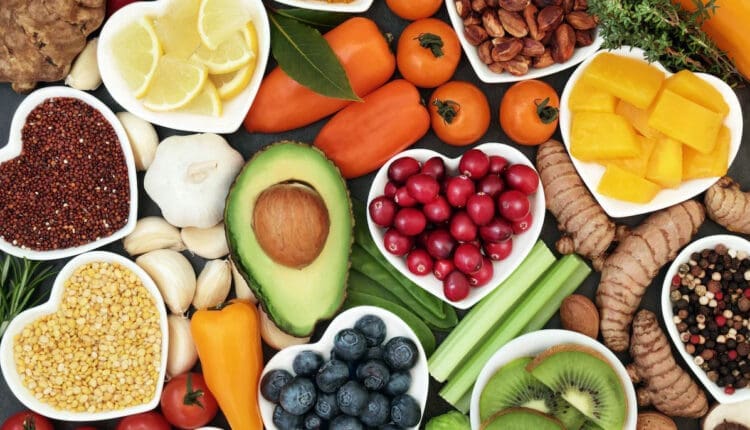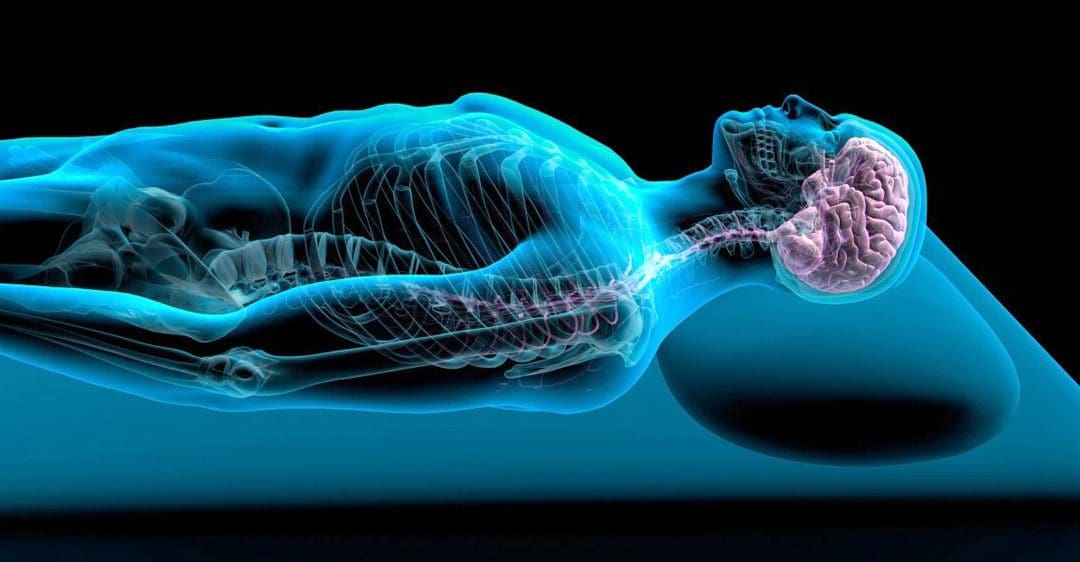Antinutrients and Their Impact on Nutrition
Can understanding antinutrients and the importance of a balanced diet help individuals get the most out of their foods?

Antinutrients
Antinutrients are compounds in some plant foods that can reduce the body’s ability to absorb and use certain nutrients. (Petroski W., & Minich D. M. 2020) The purpose of these compounds is to protect the plants from infections and insects, which benefits the plant. It can also lower the human body’s ability to absorb nutrients properly. They are found in many grains, legumes, seeds, nuts, fruits, and vegetables. Plant-based foods high in antinutrients have beneficial nutrients, such as antioxidants, fiber, and other vitamins and minerals, and have been associated with a lower risk of chronic disease. The antinutrients may prevent the digestion and absorption of some minerals and have other negative effects that include:
- Altered gut function
- Increased inflammation
- Endocrine disruption
- Increased risk of calcium kidney stones
Common Types
Some of the main antinutrients of concern include phytates, lectins, oxalates, tannins, and phytoestrogens.
Phytates (phytic acid)
- They are found in grains, legumes, nuts, and seeds.
- Phytates can reduce the absorption of iron, zinc, calcium, magnesium, and manganese. (Gupta R. K., Gangoliya S. S., & Singh N. K. 2015)
Lectins
- They are found in nearly all foods, notably legumes and grains.
- Lectins are proteins that bind to carbohydrates.
- They can be harmful in high amounts or when high-lectin foods, such as beans, lentils, and wheat, are consumed raw. (Adamcová A., Laursen K. H., & Ballin N. Z. 2021)
Oxalates
- They are found in various plant foods, including fruits, vegetables, nuts, and grains. (Mitchell T. et al., 2019)
- Oxalates bind to certain minerals, such as calcium-forming calcium oxalate.
Tannins
- They are found in many plant foods, such as legumes, cereal grains, nuts, cacao, leafy and green vegetables, coffee, and tea. (Ojo M. A. 2022)
- Tannins are antioxidant-phenolic compounds that can reduce the absorption of some minerals and proteins in the body.
Phytoestrogens
- They are found in various plant foods, such as fruits, vegetables, legumes, nuts, and seeds.
- These estrogen-like compounds have many health benefits but may also act as endocrine disruptors (interfering with hormones). (Petroski W., & Minich D. M. 2020)
Effects on the Body
Antinutrient compounds typically bind to minerals or other nutrients, which inhibits digestion and absorption. For example,
- Phytates affect calcium, iron, and zinc minerals. (Gupta R. K., Gangoliya S. S., & Singh N. K. 2015)
- Some antinutrients, such as lectins, may alter gut function. (Adamcová A., Laursen K. H., & Ballin N. Z. 2021)
- Others, like phytoestrogens, may disrupt the body’s endocrine/hormonal system.
- High calcium oxalates may increase the risk of calcium kidney stone formation. (Petroski W., & Minich D. M. 2020)
- How these foods containing antinutrient compounds are prepared and consumed can influence their impact on the body and the quantity consumed.
Advantages and Disadvantages
Plant foods have long been associated with improved health and a decreased risk of some chronic diseases, such as heart disease, diabetes, cancer, stroke, and others. (Craig W. J. et al., 2021) For most, the effects of antinutrients are not of major concern after processing and cooking. The benefits and drawbacks of consuming foods high in antinutrients include: (Petroski W., & Minich D. M. 2020)
Benefits
- Some antinutrients act as antioxidants.
- Some have cancer-fighting abilities.
- Some may increase immune system function.
- They are often sources of dietary fiber and other beneficial nutrients.
Drawbacks
- It may be difficult for some individuals to digest.
- Phytoestrogens may behave like endocrine disruptors.
- High amounts of oxalates can contribute to kidney stones.
- It may decrease the absorption of some minerals.
Foods
Plant foods are the highest in antinutrient compounds, including (Petroski W. & Minich D. M. 2020)
- Coffee
- Some teas
- Cacao
- Grains
- Nuts, such as cashews, hazelnuts, and almonds
- Legumes, such as beans, peas, peanuts, lentils and soybeans
- Seeds like flaxseeds, sunflower seeds, and sesame seeds
- Fruits and vegetables include apples, stone fruits, some berries, dark leafy greens, and potatoes.
Reducing Intake
Processing and cooking foods high in antinutrients can help reduce the amount of antinutrient compounds (Petroski W. & Minich D. M., 2020) (Harvard T.H. Chan School of Public Health, 2022)
- Soaking and sprouting
- Fermentation
- Cooking methods to minimize antinutrient content, like boiling, steaming
- Autoclaving – a cooking process that uses high pressure and heat to cook and sterilize food.
- Peeling the skins of fruits and nuts is effective for reducing tannins.
- Combining foods to enhance nutrient absorption.
- For example, pairing high-oxalate foods with high-calcium foods.
Combining different cooking and processing methods can completely degrade and reduce many antinutrient compounds. The exception is phytoestrogens, where boiling, steaming, and fermentation can increase antinutrients. (Petroski W. & Minich D. M., 2020)
Balancing Nutrition
The Dietary Guidelines for Americans recommend consuming nutrient-dense foods across all food groups. (U.S. Department of Agriculture, 2020)
- Including various foods in one’s diet will help ensure one gets a diverse range of nutrients to fuel the body properly.
- When consuming high-antinutrient foods, use processing and cooking methods known to reduce antinutrient compounds.
- Think about making balanced food pairings to optimize nutrient absorption and minimize antinutrient intake.
For example, combining foods high in vitamin C with foods containing iron in the same meal or snack can enhance iron absorption, opposing the antinutrient activity of phytates. (National Institutes of Health Office of Dietary Supplements, 2024)
Injury Medical Chiropractic & Functional Medicine Clinic
Individuals concerned about antinutrients in their diet and who want individualized advice on how to get the most out of the food they eat should consider consulting with a registered dietitian nutritionist or another healthcare professional. Injury Medical Chiropractic and Functional Medicine Clinic works with primary healthcare providers and specialists to develop an optimal health and wellness solution.
Smart Choices, Better Health
References
Petroski, W., & Minich, D. M. (2020). Is There Such a Thing as “Anti-Nutrients”? A Narrative Review of Perceived Problematic Plant Compounds. Nutrients, 12(10), 2929. https://doi.org/10.3390/nu12102929
Gupta, R. K., Gangoliya, S. S., & Singh, N. K. (2015). Reduction of phytic acid and enhancement of bioavailable micronutrients in food grains. Journal of food science and technology, 52(2), 676–684. https://doi.org/10.1007/s13197-013-0978-y
Adamcová, A., Laursen, K. H., & Ballin, N. Z. (2021). Lectin Activity in Commonly Consumed Plant-Based Foods: Calling for Method Harmonization and Risk Assessment. Foods (Basel, Switzerland), 10(11), 2796. https://doi.org/10.3390/foods10112796
Mitchell, T., Kumar, P., Reddy, T., Wood, K. D., Knight, J., Assimos, D. G., & Holmes, R. P. (2019). Dietary oxalate and kidney stone formation. American journal of physiology. Renal physiology, 316(3), F409–F413. https://doi.org/10.1152/ajprenal.00373.2018
Ojo, M. A. (2022). Tannins in Foods: Nutritional Implications and Processing Effects of Hydrothermal Techniques on Underutilized Hard-to-Cook Legume Seeds-A Review. Preventive nutrition and food science, 27(1), 14–19. https://doi.org/10.3746/pnf.2022.27.1.14
Craig, W. J., Mangels, A. R., Fresán, U., Marsh, K., Miles, F. L., Saunders, A. V., Haddad, E. H., Heskey, C. E., Johnston, P., Larson-Meyer, E., & Orlich, M. (2021). The Safe and Effective Use of Plant-Based Diets with Guidelines for Health Professionals. Nutrients, 13(11), 4144. https://doi.org/10.3390/nu13114144
Harvard T.H. Chan School of Public Health. (2022). Are anti-nutrients harmful? https://nutritionsource.hsph.harvard.edu/anti-nutrients/
U.S. Department of Agriculture. (2020). Dietary Guidelines for Americans, 2020-2025. Retrieved from https://www.dietaryguidelines.gov/sites/default/files/2021-03/Dietary_Guidelines_for_Americans-2020-2025.pdf
National Institutes of Health Office of Dietary Supplements. (2024). Iron. Retrieved from https://ods.od.nih.gov/factsheets/Iron-HealthProfessional/



